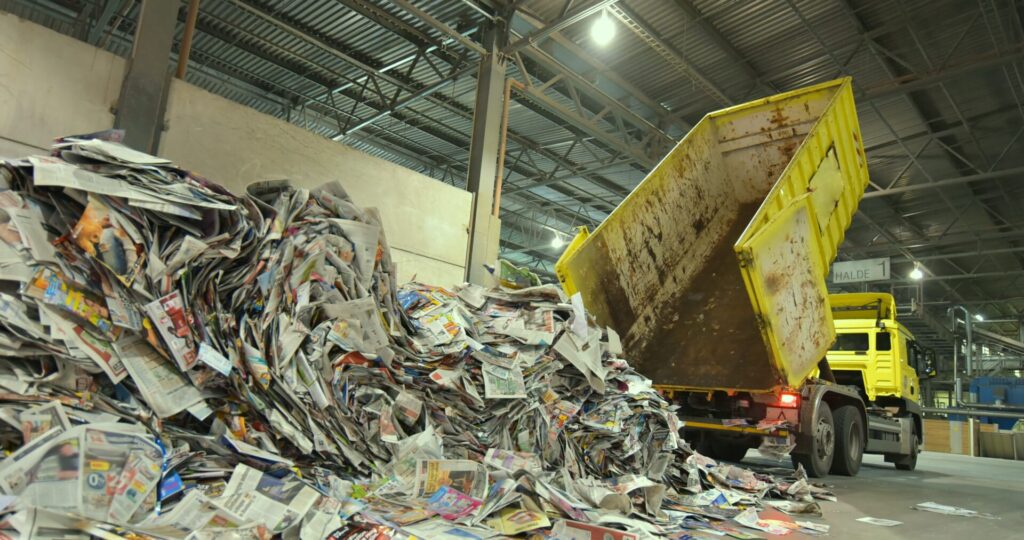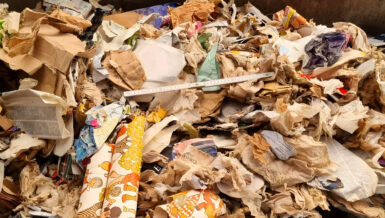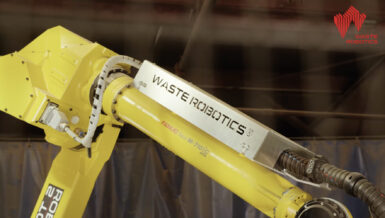- Rise of Advanced Sorting Technologies: Manual and semi-automated sorting methods are being increasingly replaced by AI-powered systems and hyperspectral sensors. Machine learning and deep-learning algorithms enable equipment to identify materials more precisely, thereby reducing contamination rates and increasing the yield of high-quality paper fibers. Countries like Germany, Japan, and the Netherlands are leading this transition, with global adoption gaining momentum.
- Shift Towards Closed-Loop Recycling Models: More corporations, especially in the packaging sector, are committing to circular economy principles. This includes designing paper products that are easier to recycle and creating infrastructure to ensure that used materials can be reintegrated into the same production cycle. For example, some multinational brands are directly partnering with paper mills to establish closed-loop supply chains, where recovered fiber is repurposed to manufacture new packaging for the same company.
- Regulatory Pressure to Reduce Contamination: Governments worldwide are tightening restrictions on acceptable contamination levels in recyclables. The Chinese National Sword policy marked a pivotal moment, and similar initiatives are now emerging in Latin America, the European Union, and parts of Southeast Asia. These policies are compelling municipalities and material recovery facilities (MRFs) to invest in improved education and technology to minimize non-paper materials in recycling bales.
- Increased Use of Recycled Content in Packaging: Paper-based packaging is increasingly replacing plastic, and many companies are committing to using a higher percentage of post-consumer recycled content. However, this trend places pressure on the availability and quality of recycled fibers. As e-commerce continues to grow, the demand for corrugated cardboard and other paper-based packaging materials is also rising, further intensifying this demand.
- Decline of Graphic Paper Markets Boosting the Tissue Sector: While consumption of newspapers and office paper continues to decline, the tissue and hygiene product sector is experiencing substantial growth. Manufacturers are responding by reconfiguring their fiber supply chains to prioritize high-grade recycled pulp suitable for producing soft and absorbent paper products.
- Emergence of Decentralized Recycling Hubs: In regions with inadequate recycling infrastructure, decentralized recycling units are proving effective. These small-scale facilities utilize compact, modular sorting and pulping systems to recycle locally sourced paper waste. This model reduces transportation costs, minimizes emissions, and supports economic development at the community level, particularly in parts of Africa, Southeast Asia, and Latin America.
- Digitalization of Paper Mill Operations: Modern paper mills are adopting digital twins, predictive maintenance, and automated quality control. By using real-time data, mills can adjust process parameters for fiber consistency, moisture levels, and contaminant presence, leading to higher efficiency and less waste. This trend is particularly notable in Scandinavia and North America, where paper producers are investing in Industry 4.0 capabilities.
- Fiber Quality Preservation as a Strategic Priority: With more recycling loops, fiber degradation becomes a growing concern. Maintaining fiber integrity is now a top priority, prompting innovations in deinking, cleaning, and flotation systems. Some equipment manufacturers are developing “gentle treatment” solutions that balance efficiency with fiber preservation, especially for short-fiber grades used in tissue and newsprint.
- Growing Role of Recycled Fiber in Sustainable Certification: Certifications such as FSC Recycled, Blue Angel, and Cradle-to-Cradle Certified™ are gaining importance in both B2B and consumer markets. These labels not only reflect responsible sourcing but also validate recycling practices. As large companies strive to meet ESG reporting requirements, the demand for traceable and certified recycled fiber is increasing, influencing procurement strategies across various industries.
- Innovation in Chemical Recycling for Paper Waste: While mechanical recycling remains dominant, chemical recycling technologies for paper are beginning to take shape. These methods can break down complex paper products, such as wax-coated, laminated, or composite materials, into usable fibers. Though still in the pilot or early commercialization stages, chemical pulping holds promise for increasing the recycling rates of currently non-recyclable paper products.
Looking Ahead
As these trends unfold, collaboration among municipalities, recyclers, equipment manufacturers, and product designers will be essential to shape the future of paper recycling effectively.








